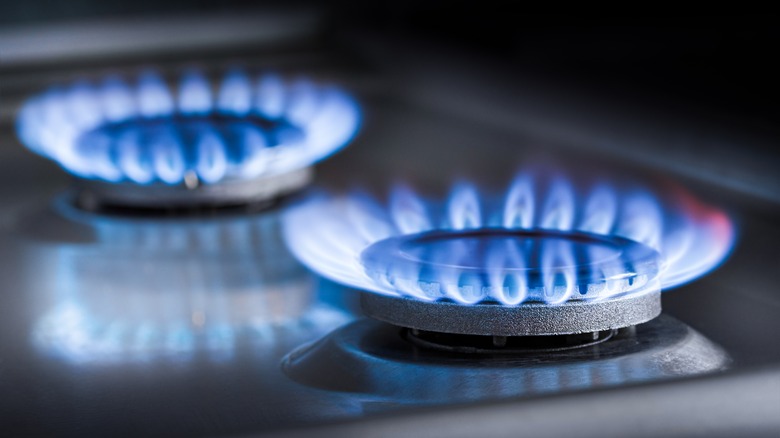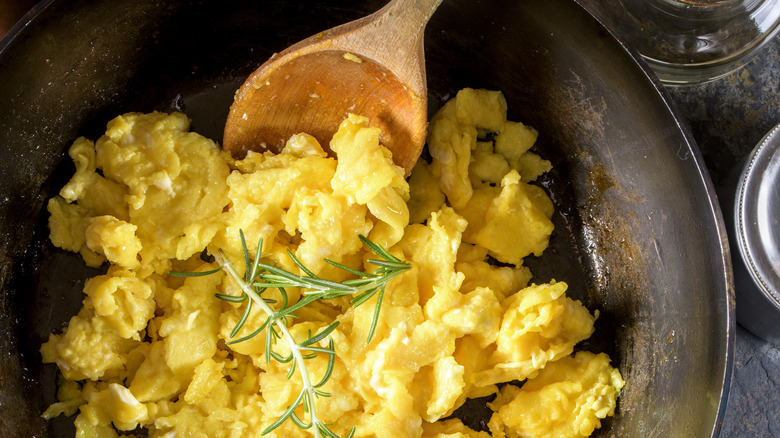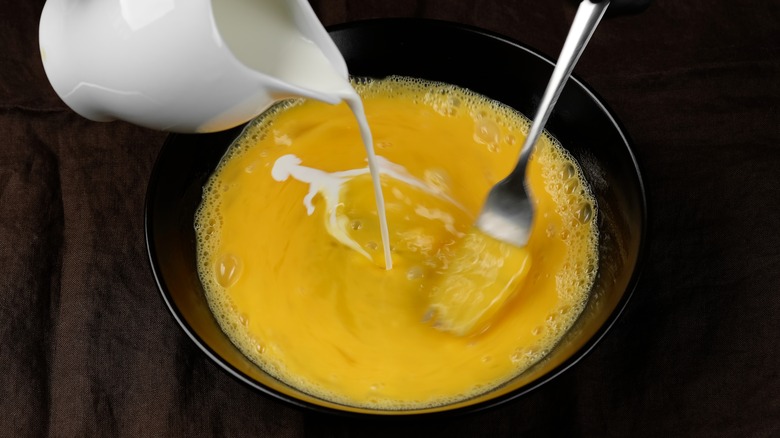The Best Burner Temperature For Creamy, Fluffy Scrambled Eggs
If you're looking to cook pillowy, creamy scrambled eggs (as opposed to their dry and crumbly overcooked counterpart), setting your stove to the right temperature is one of the most important factors. Generally speaking, you want a temperature on the low side — some recipes recommend low heat, others go for medium-low, but nothing higher than that is advisable. The lower heat keeps the water in the eggs from evaporating, and the water retention allows them to form into those smooth curd-type shapes you want. Low heat also makes it easier to avoid overcooking, since there's a longer window to take them off the heat between "perfectly cooked" and "dry and rubbery."
Unfortunately, this means that if you're in a rush, turning up the heat so that the eggs cook quickly isn't a good idea, at least if you're concerned about having a tasty end product. There aren't really any widely recommended alternate ways to speed up the cooking process: You could try using a larger pan (but still on low heat) so that a greater proportion of egg is touching the hot surface, but otherwise, scrambling eggs in a rush isn't a recipe for an appealing breakfast — it's best to keep it low and slow.
Other things to bear in mind as you scramble
Not all stoves are created equal: There's no universal definition of "medium-low," and some stoves might run hotter than others. So, pay attention to the eggs as they cook. If they're turning brown (even just a little bit around the edges), your heat is too high — turn it down. (You can also pull the pan off the stove to try and save the current batch you're cooking.)
Also, consider how long the eggs are taking to cook, or even start a stopwatch the moment you put the eggs in the pan. If you're aiming for lusciously soft curds, it should take two to three minutes of cooking, so if those eggs are firming up within just a minute on the stove, your heat is likely much too high. Of course, getting the heat on your stove right isn't the only trick for getting perfectly scrambled eggs, but it's a key factor — but consider researching other tips for scrambling eggs (for example, the fact that you should whisk your eggs thoroughly, but only right before they hit the pan, so the whisked eggs stay aerated).
One more trick to prevent overcooking
Finally, you'll want to bear in mind that even when you take scrambled eggs off the stove, they'll continue cooking due to the heat in the pan. So, unless you're ready to get them straight out of the pan and onto a plate, take them off the heat when they're slightly short of being perfectly cooked. (And yet again, cooking on low heat helps keep this extra warming in check, since the pan won't be so hot.)
However, there's an alternative way around this issue: Some recipes (including one egg recipe from Gordon Ramsay) suggest adding something creamy like crème fraîche towards the end of cooking. This reduces the overall temperature and slows down that carryover cooking, helping keep your eggs from getting too firm even when they're off the heat. It's worth bearing in mind that adding crème fraîche or dairy products like milk isn't a shortcut to making your scrambled eggs nice and creamy. It might make the end product more rich (although you really only need a spoonful), but some argue that it can make for a wet-yet-rubbery end product with less flavor.


